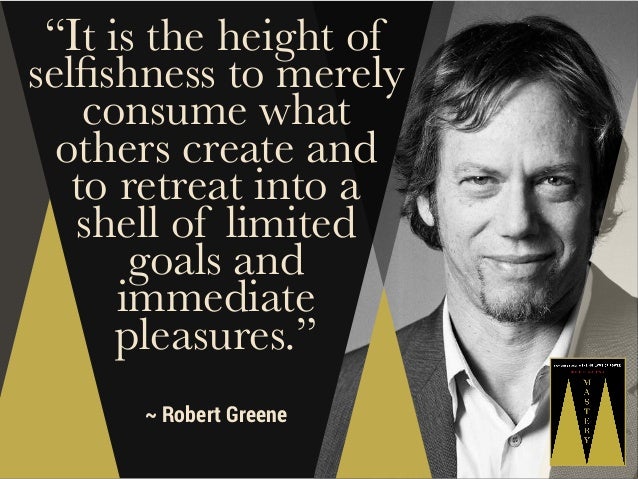Chapter 4: The Crucified God
This chapter unrelentingly and convincingly makes a case against most atonement theories, especially the penal substitution and satisfaction theories which posit that God is an offended deity who can only be propitiated with a blood sacrifice. "The sacrifice of Jesus is not a utilitarian payment to an offended deity bound to an economy of appeasement... The beauty of the cross is found in divine forgiveness." In contrast to the conceptualizations of the cross most of us have been handed, Zahnd describes the crucifixion first as a state-sponsored lynching of an innocent man, which is exactly what Plato in
The Republic had predicted would happen to a perfectly just man.
One of Zahnd's many powerful points in this chapter is as follows:
The apostle Paul tells us that "in Christ God was reconciling the world to himself." This should not be misunderstood as God reconciling himself to the world. It wasn't God who was alienated toward the world; it was the world that was alienated toward God. Jesus didn't die on the cross to change God's mind about us; Jesus died on the cross to change our minds about God! It wasn't God who required the death of Jesus; it was humanity that cried, "Crucify him! Crucify him!" When the world says, "Crucify him," God says "Forgive them."
A particularly challenging point to my libertarian philosophy is this idea: "In Christianity the supreme value is not freedom but love. We can kill in the name of freedom, but in the name of love we suffer and forgive. Our savior is Jesus Christ crying "Forgive!"-- not William Wallace crying "Freedom!" This, in my mind, is the truly radical heart of Christianity-- which not coincidentally is what is too often missing from the institutionalized church.
He then makes the point that
The justice of God is not retributive; the justice of God is restorative. Justice that is purely retributive changes nothing. The cross is not where God finds a whipping boy to vent his rage upon; the cross is where God saves the world through self-sacrificing love. The only thing God will call justice is setting the world right, not punishing an innocent substitute for the petty sake of appeasement.
This restorative conceptualization of justice is another concept that is sadly missing from most of today's churches. Informed by their theology of a vengeful God, American Christians have set up a vast network of "correctional institutions" that are anything but correctional, and which have destroyed the lives of millions, most of whom are nonviolent offenders of arbitrary and senseless drug laws. Perhaps if we had a proper restorative view of justice, our justice system might actually work the way its supposed to, healing broken lives rather than shattering them.
To sum up the chapter,
- God reconciled the world to Himself on the cross, not Himself to the world. He is not the vengeful God requiring blood sacrifice conceived of by ancient tribal peoples, but a God of love and restoration as demonstrated by Jesus Christ, especially on the cross saying "Forgive them."
- The radical heart of Christianity is love, not freedom or any other value. Only love can break the cycle of violence the world has been locked in.
Chapter 5: Who Killed Jesus?
In this chapter, Zahnd picks up where he left off in his last chapter, and finishes off the common conception that he cross is the result of God's need for retributive justice. Here is one way he puts it:
In the parable of the prodigal son, the father doesn't rush to the servants' quarters to beat a whipping boy and vent his anger before he can forgive his son. Yet Calvin's theory of the cross would require this ugly insertion into Jesus' most beautiful parable. No, in the story of the prodigal son, the father bears the loss and forgives his son from his treasury of inexhaustible love. He just forgives. There is no payment. Justice as punishment is what the older brother called justice. The only wrath we find in the parable belongs to the Pharisee-like older brother, not the God-like father. Justice as the restoration of relationship is what the father called justice.
Now, it's understandable that many reading the Bible would come to the conclusion that God desires sacrifice. After all, that's what was commanded in the Old Testament, right? Yet even the Old Testament is not consistent on this, and there seems to be a growing awareness (dare I call it an enlightenment?) that, as David puts it, "Sacrifice and offering you do not desire... burnt offering and sin offering you have not required," or in Hosea's words, God desires "steadfast love and not sacrifice." Hebrews echoes this exact sentiment, as does Jesus when he tells the sacrifice-obsessed Pharisees to "go and learn what this means, 'I desire mercy, not sacrifice.'"
Indeed, it was these Pharisees, and the other "principalities and powers," that, as Paul puts it, Jesus "put to an open shame by his victory over them on the cross." It turns out, viewing the cross as a ritual sacrifice "leaves unchallenged the massive structures of sin that so grotesquely distort humanity... Now the cross forever shames the rick and powerful who seek to preserve their privilege and position through the use of violence. Their pretentious claim that they are wise and just enough to use violent means to achieve good ends is put to everlasting shame. If we claim that it was God who required the crucifixion of Jesus, we seek to clothe with false dignity the very structures of sin that Jesus deliberately stripped bare and put to open shame in his death." True love must subvert the violence and injustice of empire, yet the power of this subversion is lost when we blame God for killing Jesus.
Zahnd presses further. He notes that if Jesus had to be tortured to death for our sins, each of use must deserve the very same thing. And that indeed is what I have heard time and again from the pulpit and read in Systematic Theology books. But of course it isn't true that everyone who has ever lived except for Jesus deserves to be tortured to death. That is "a vicious assault on divine goodness and human dignity" on the level of saying that God commands genocide. What we all need and deserve is love and healing, not torture and death, because we bear the very image of God.
The vision of Jesus dying for our sins should instead be this: "We violently sinned our sins into Jesus, and Jesus revealed the heart of God by forgiving our sins. By saying 'we' violently sinned our sins into Jesus, I mean hat all of us are more or less implicated by our explicit or tacit support of the systems of violent power that frame our world."
To sum up, "What Jesus did on the cross is far more mysterious and beautiful than simply offering himself as a primitive ritual sacrifice... God's action on Good Friday was to surrender his beloved Son to our system. And our system killed him. But on Easter Sunday God overthrew our satanic verdict by raising Jesus from the dead! ... Instead of being organized around blame and ritual killing, the world is to now be organized around forgiveness and cosuffering love.
Chapter 6: Hell... and How to Get There
This chapter is another must-read. Zahnd peels back the centuries of Western misconceptions about hell dating back to Dante and John Calvin, revealing in clear and dramatic fashion Jesus' actual teachings about hell. He repeatedly notes how we "read into" passages things that aren't there-- and gives several examples. Jesus' parables of the rich man and Lazarus and the sheep and the goats are two examples in which Jesus teaches that the wicked-- those who inflict evil on others-- are condemned. Never once is a sinner's prayer or somehow "accepting Jesus into your heart" mentioned. Neither is it mentioned in all of the evangelistic sermons detailed in Acts. Rather,
According to Jesus, the avoidance of afterlife condemnation is not based upon being able to give particular answers to abstract theological questions cribbed from John Calvin and labeled "faith" but on how one actually lives his or her life. Jesus certainly did not lay the foundation for an afterlife theology that claims all non-Christians go to hell. This has become a common way of thinking about heaven and hell-- "Christians go to heaven; non-Christians go to hell"-- but it is not based on anything Jesus ever said! ... Life is not an elaborate testing center for afterlife placement based on theological acumen... The New Testament teaches that it is Christ who judges how we have lived our lives: "For all of us must appear before the judgment seat of Christ, so that each may receive recompense for what has been done in the body, whether good or evil."
The second half of the chapter draws upon CS Lewis' conception of heaven and hell in
The Great Divorce, where the damned "enjoy forever the horrible freedom they have demanded, and are therefore self-enslaved just as the blessed, forever submitting to obedience, become through all eternity more and more free." His key point is that hell is simply the state that results when a person cuts herself off from giving or receiving love. God's fiery love, which is warmth and light to those who receive it, is indeed torment to those who refuse it. Whether it is truly eternal is anyone's guess-- Zahnd speculates that "hell is as eternal as the human capacity to resist God, and thus hell is potentially eternal."
Lest he be misinterpreted, Zahnd reinforces his conclusion with a thought experiment comparing hypothetical women named Becky, from Kalamazoo, Michigan, and Belqees, from Kabul, Afghanistan. Becky is a Christian but a mean, self-righteous, and judgmental Pharisee. Belqees is a devout Muslim who is a kind and generous soul who regularly cares for the poor and sick. What happens when they die? Only a monstrous theology would condemn Belqees to hell while escorting Becky to her "finely appointed luxury mansion. And in response to the common objection that "only Jesus can save," Zahnd responds,
"Yes and amen." And who are you to tell Jesus whom he can and cannot save?! Are you going to tell Jesus he cannot save Belqees? Jesus can save whomever he wants. Jesus is Lord... This thought experiment, which I've given to many people, often leads to the objection that such a theology would lead to a lack of motivation for evangelism. But this is true only if you think the gospel is about the postmortem issues of heaven and hell, a subject never raised in the apostolic sermons in Acts. The truth is that the gospel is a joyful proclamation that the kingdom of God has arrived with the incarnation and resurrection of Jesus Christ... If you don't know how to preach the gospel without making appeals to afterlife issues, you don't know how to preach the gospel!
The odious dogma that only Christians go to heaven has needlessly and tragically driven countless away from the faith. We Westerners would do well to follow the humble lead of our Eastern Orthodox brethren in this matter, who believe God is great enough to save anyone he wants. May we all avoid the belief that only those who think like us wind up in heaven, for that belief is itself a highway to hell. Just look at fundamentalists like Westboro Baptist. They're on the first bus there.













